Expert Tips on Understanding Pearl Shapes

Welcome to our guide on understanding pearl shapes, where we delve into the captivating world of these lustrous gemstones and uncover their unique allure.
Pearls have enchanted humanity for centuries with their timeless elegance and natural beauty.
The significance of pearl shapes, our primary focus, lies in their aesthetic appeal and the intriguing way they reflect the personalities and preferences of those who wear them.
Each pearl shape has its distinct charm, making it a versatile choice for various jewellery designs and occasions.
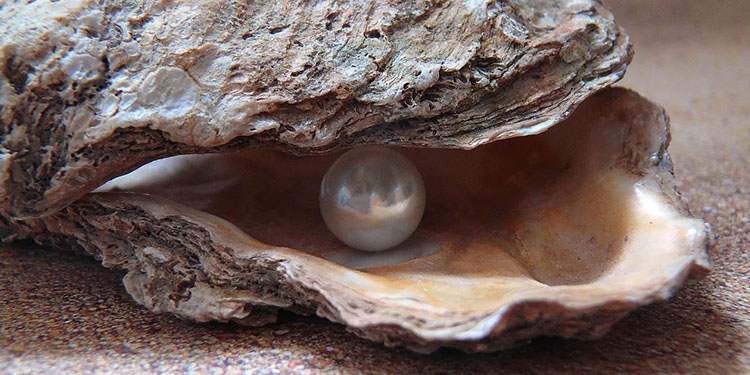
Often hailed as nature's miracles, Pearls have an innate ability to capture and reflect light, giving them a subtle yet enchanting glow.
Their natural beauty transcends cultural boundaries and has been treasured throughout history, making them an enduring symbol of sophistication and grace.
Whether worn as classic necklaces, dainty earrings, or statement rings, pearls always contain an air of timeless charm.
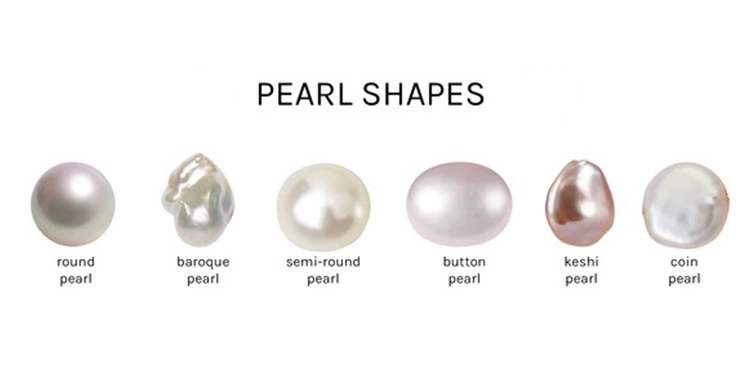
In this guide, we will explore the various pearl shapes, shed light on their unique characteristics, and help you make an informed choice when selecting pearls for your jewellery collection.
So, let's discover the enchanting world of pearl shapes and the beauty they bring to your adornments.
Pearl Shape Basics
Understanding Pearl Shape
1. What Defines the Shape?
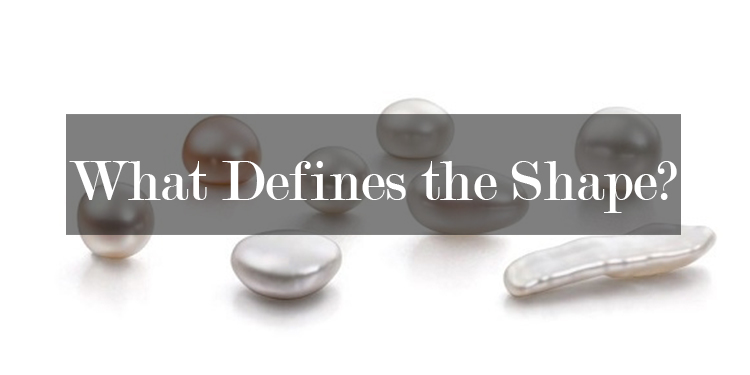
The shape of a pearl is a fundamental aspect of its visual appeal and uniqueness.
Pearls come in various shapes, each with its characteristics.
The shape is primarily defined by the pearl's growth pattern within the mollusk.
A perfectly spherical pearl is a rare treasure, as it is formed when layers of nacre, the substance that gives pearls their iridescence, are deposited evenly around a central core.
However, most pearls exhibit variations in shape due to irregular nacre deposition.
2. How Shape Affects
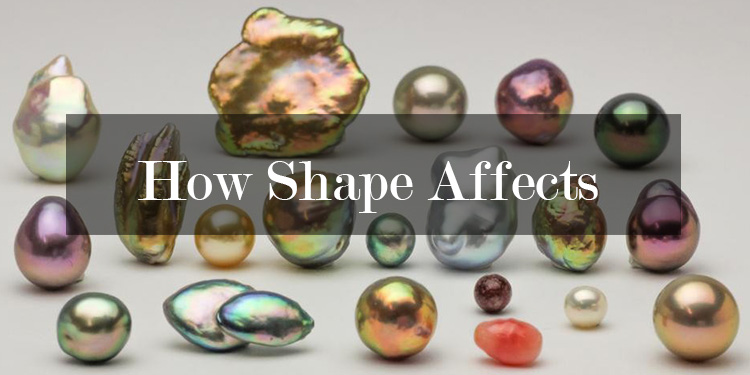
ValueThe shape of a pearl can significantly impact its value.
Round pearls are the most coveted and traditionally fetch higher prices due to their classic and symmetrical appearance.
Other shapes, such as oval, teardrop, and button pearls, also hold value but may be more affordable.
Conversely, baroque pearls, known for their irregular and freeform shapes, tend to be unique and less expensive.
The rarity of a particular shape, combined with its visual appeal, influences its market value, making understanding pearl shapes crucial for buyers and sellers.
Common Pearl Shapes
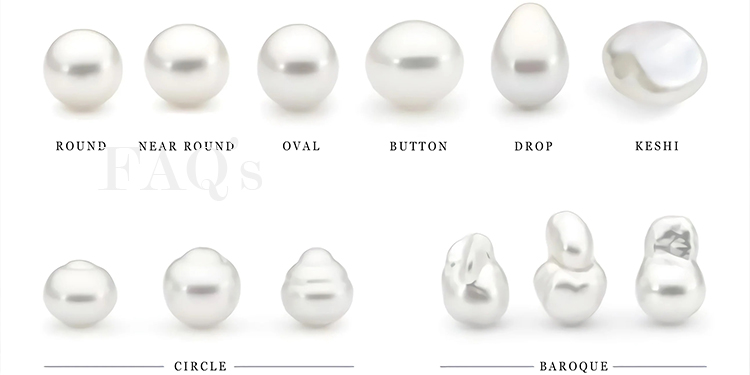
1. Round Pearls
Round pearls are considered elegant and highly sought after for their timeless and symmetrical appearance.
They are prized for their rarity, as less than 5% of pearls harvested are perfectly round.
Round pearls are a classic choice for necklaces, earrings, and bracelets, adding a touch of sophistication to any ensemble.
2. Oval Pearls
With their elongated shape, oval pearls offer a versatile alternative to round pearls.
They are a popular choice for both contemporary and traditional jewellery designs.
Their elegant form complements a variety of settings that stand out.
3. Baroque Pearls
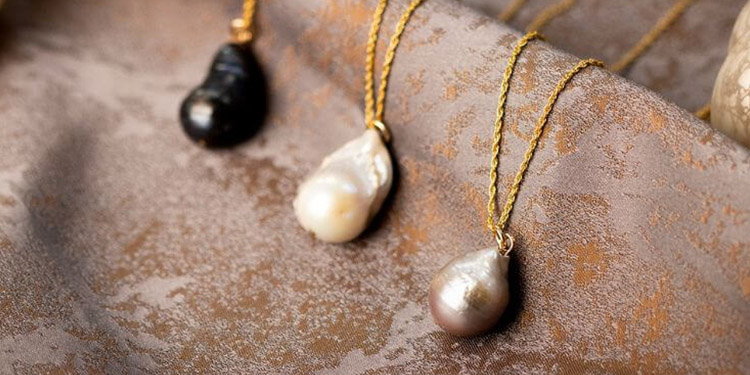
Baroque pearls embrace irregularity and asymmetry, making each a distinct work of nature's art.
Their unique shapes can resemble abstract sculptures and are appreciated for their individuality.
Baroque pearls are often used in statement jewellry, where their unconventional shapes become the focal point of the design.
4. Button Pearls
Button pearls are slightly flattened and resemble a button or disk.
They are a versatile choice for jewellery, providing a classic look with a unique twist.
Button pearls work well in earrings and pendants, adding a touch of sophistication.
5. Teardrop Pearls
Teardrop pearls, also known as pear-shaped pearls, feature a rounded body that tapers to a point at one end, resembling a teardrop.
This shape symbolises elegance and femininity, making it a popular choice for pendant necklaces and earrings.
Teardrop pearls can add a touch of romance and grace to your jewellery collection.
Rare and Unique Pearl Shapes
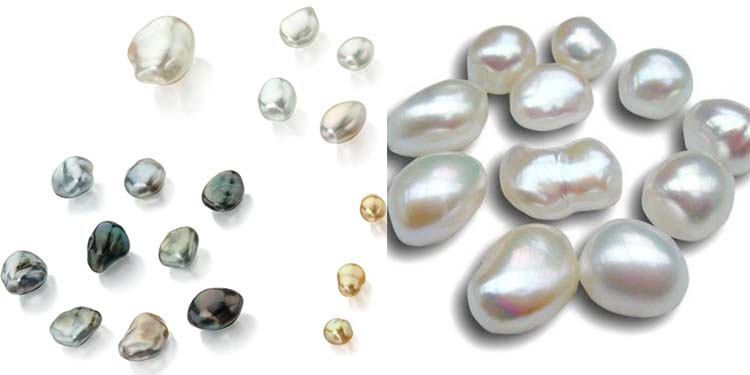
Examples of Rare Shapes:
Some of the rarest pearl shapes include the baroque pearls, which come in irregular, non-spherical forms, often resembling abstract art.
Keshi pearls, a natural byproduct of cultured pearl farming, showcase an irregular shape and mesmerizing lustre.
Conch pearls in queen conch shells possess an alluring flame-like pattern and are exceedingly scarce.
Collector's Value:
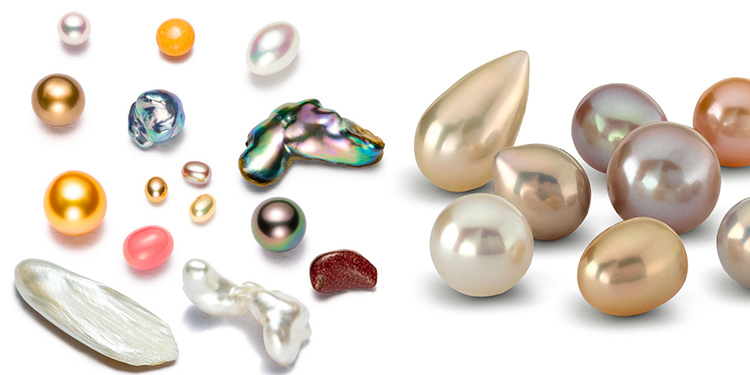
Pearls with unique shapes hold immense collector's value.
These one-of-a-kind treasures are highly sought after by connoisseurs and collectors worldwide.
Their rarity adds an air of exclusivity, making them prized possessions in the world of fine jewellery.
Unique Jewelry Pieces:
Rare pearl shapes inspire artisans to craft extraordinary jewellery pieces.
From avant-garde necklaces to artistic brooches, these pearls offer endless possibilities for creating distinctive, eye-catching adornments that stand out in any collection.
Their uniqueness adds a touch of sophistication and individuality to jewellery designs, making them coveted by those who appreciate the extraordinary.
How to Choose the Right Pearl Shape
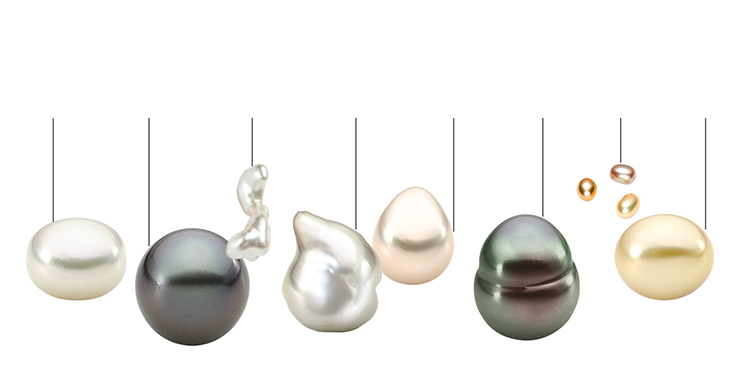
When selecting the perfect pearl shape, consider these crucial factors:
A. Body Shape and Face Structure:
Different pearl shapes complement varying body types and facial features.
Round pearls are universally flattering, while teardrop or oval shapes can elongate the neck and flatter round faces.
For heart-shaped faces, button pearls provide balance.
B. Occasion and Style:
Match the occasion and style of your outfit.
Round pearls are ideal for formal events, while irregular baroque pearls add an artistic flair to casual wear.
Drop earrings with elegant pearls enhance evening attire.
C. Personal Preference:
Choose a shape that resonates with your taste and style.
Pearls should reflect your personality and make you feel confident and beautiful.
Trust your instincts to find the perfect pearl shape that complements your individuality.
Expert Opinions
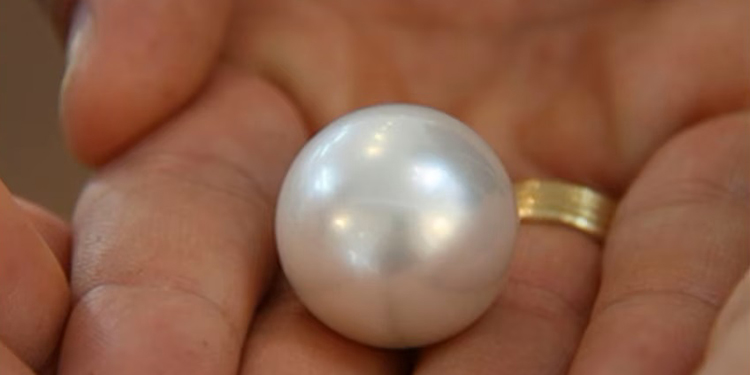
In our quest to deepen our understanding of pearl shapes, we've had the privilege of conducting interviews with esteemed experts.
With their wealth of knowledge and experience, these individuals offer invaluable insights into the intricacies of pearls.
Through their expertise, we gain a deeper appreciation for the significance of pearl shapes in jewellery.
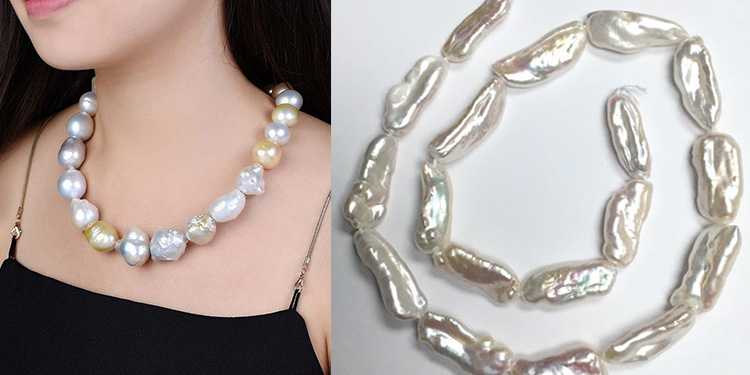
Our discussions with these experts reveal their profound understanding of the various aspects that define pearl shapes – from the classic round pearls to the more unconventional and artistic shapes.
Their insights encompass everything from each shape's cultural and historical significance to the technical aspects of pearl grading.
By tapping into their wisdom, we aim to provide you with a comprehensive and enlightening exploration of pearl shapes, enriching your appreciation for these timeless gemstones.
Summary of Pearl Shapes
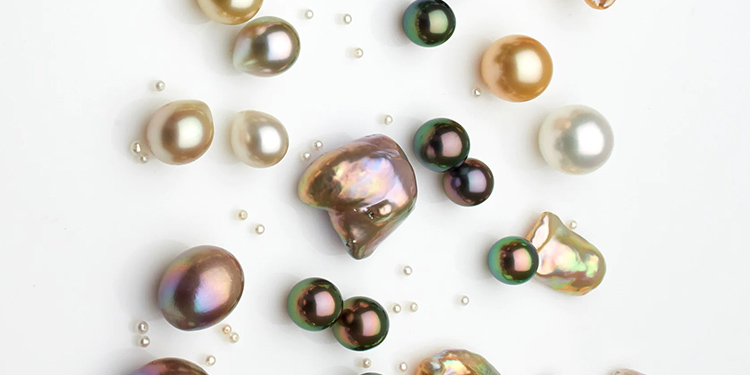
The world of pearl shapes is a captivating realm where nature's artistry and human craftsmanship intersect.
Each shape has unique charm and significance, catering to diverse tastes and occasions.
Armed with expert insights, you are better equipped to choose the perfect pearl shape to adorn yourself or your loved ones, adding a touch of elegance and individuality to your jewellery collection.
FAQs About Pearl Shapes
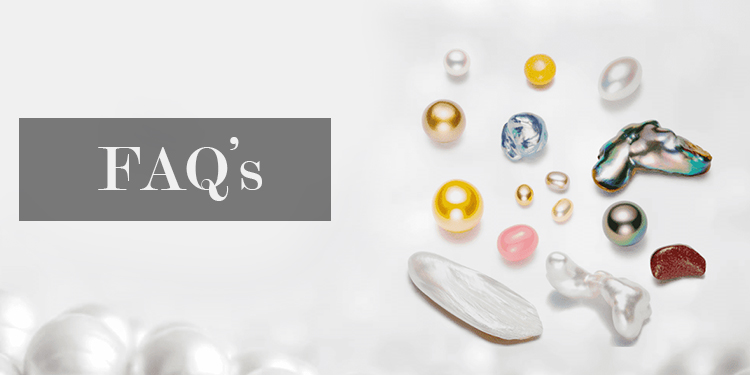
Can I customise pearl shapes?
Customising pearl shapes is typically impossible, as they are naturally formed within mollusks.
However, artisans can create unique jewellery designs using naturally occurring pearl shapes to suit individual preferences.
How does the shape affect pearl pricing?
Pearl shape significantly influences pricing.
Round pearls, due to their rarity, generally command higher prices.
Other shapes, such as oval and teardrop, hold value but may be more affordable.
Baroque pearls, with their irregularity, tend to be unique and less expensive.
Are irregularly shaped pearls less valuable?
Irregularly shaped pearls, such as elaborate, are often considered less valuable than perfectly round pearls due to their unique, non-uniform appearance.
However, their individuality can also make them highly sought-after for artistic and unconventional jewellery designs.
Which shape is best for a classic look?
For a classic look, round pearls are the best choice.
Their timeless symmetry and elegance make them a quintessential and universally flattering option, perfect for traditional and sophisticated styles in British English.
Additional Resources
Books and Articles
1."Pearls: A Natural History" by Neil H. Landman, Paula M. Mikkelsen, and Rudiger Bieler - This book offers a comprehensive exploration of pearls, their history, and their significance in nature and culture.
2."The Pearl Buying Guide" by Renee Newman - A valuable resource for those looking to purchase pearls, this guide provides insights into assessing pearl quality and authenticity.
Pearl-Related Organizations:
1. The Cultured Pearl Association of America (CPAA) - This educational organization promotes cultured pearls with valuable resources on pearl types and care.
2. Gemological Institute of America (GIA) - GIA provides comprehensive information on pearls, including identification, grading, certification, and courses for professionals and enthusiasts.
Online Retailers
1. Pearl Paradise - A reputable online retailer offering a wide range of pearl jewellery, including necklaces, earrings, and bracelets, with detailed product descriptions and educational content.
2. The Pearl Source - Known for its high-quality pearls and competitive pricing, this retailer offers a variety of pearl jewellery options and educational resources.
3. Mikimoto - A renowned brand for luxury pearls, Mikimoto offers a selection of exquisite pearl jewellery, showcasing the finest craftsmanship and quality.
4. White Victoria - White Victoria is a highly cost-effective jewelry website with various styles.


Leave a Comment